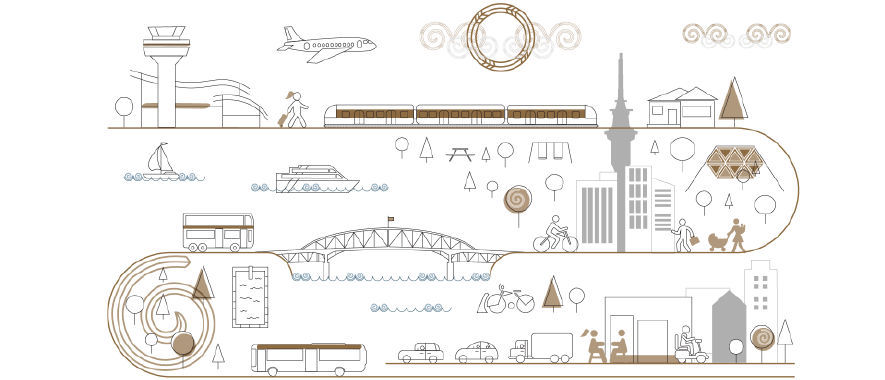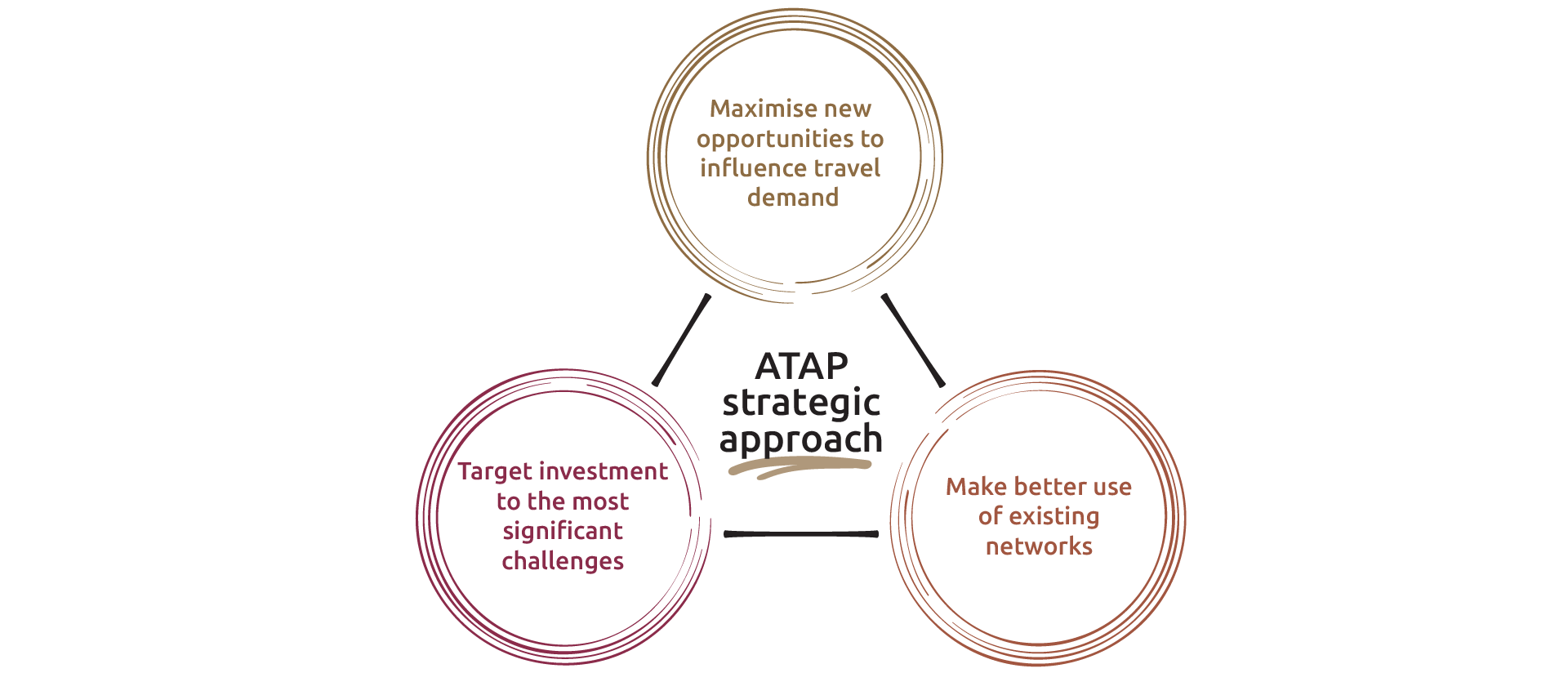Some council services will be unavailable over the Christmas and New Year break.
Check which services are affected.

To lead successful and enjoyable lives, it is vital that people can easily, safely and sustainably reach the things that matter most to them, such as work, school, friends, recreation and healthcare.
To achieve this we need sustainable, resilient and efficient ways for people, goods and services to move within and across Auckland, throughout New Zealand and across the world.
For Auckland to be a truly accessible city we also need to make sure that people of all ages and abilities, including people with reduced mobility levels, can go about their daily lives and get from one place to another easily, affordably and safely.
This means tailoring the way infrastructure The structures, systems and facilities that support daily life such as water supply, roads and communications, including social infrastructure. and services are provided so they meet the wide range of Aucklanders' needs.
Find out more by visiting the Auckland Design Manual and the Office for Disability issues website.
Our transport system is key to making Auckland more accessible, and for us all to benefit from growth. While great improvements have been made over the past 20 years, historic under-investment, combined with rapid population growth, means we still face big challenges.
Past decisions shaped Auckland into a relatively low-density city where private vehicles were the most viable or default option for the majority of trips.
Our car-focused transport system is put under significant strain by:
These factors cause harm to people and the environment.
Further challenges come from ongoing impacts of COVID-19 and the growing threat of climate change.
There is now widespread recognition that we cannot simply build our way out of these challenges.
Instead, making progress requires a combination of:
The opening of the Waterview Tunnel in 2017 largely completed the core motorway network, and increased investment over the past two decades has started to develop a quality public transport system. This makes it possible for people to avoid congestion when they travel by bus, train or ferry.
Auckland’s rapid transit network barely existed two decades ago, but investment in the rail network and construction of the separated busways mean this network now carries over 30 million passengers a year, with use continuing to grow strongly.
Over the last few years there has also been increased investment in cycleways and making Auckland more cycle friendly.
In some areas there have been improvements for pedestrians as well, such as the Te Ara Mua Future Streets project in Māngere, ranging from how traffic is managed, to better paving, lighting and safety. Also, the Innovating Streets for People programme that aims to transition our streets to safer and more liveable spaces.
However, the legacy of past decisions is still felt today. Many projects that were first planned decades ago, such as the City Rail Link, are only now being built and are faced with the task of both addressing existing infrastructure deficits and preparing the transport system. for future growth.
As a consequence, private vehicles are still the default mode of transport for many Aucklanders. Major chokepoints and bottlenecks also remain on many main roads.
A significant challenge for Auckland and globally, is that greenhouse gas emissions have continued to rise over the last century or two. We are now in a climate emergency which means we need to reduce our reliance on fossil fuels across all sectors and parts of society, whilst also preparing for the impacts on our climate.
The transport system is the largest source of carbon emissions. It emits over 40 per cent of Auckland’s total emissions. The bulk of these comes from road transport (86 per cent).
Transformational change to the transport system will be required to achieve Auckland’s climate goals.
To learn more, visit Te Tāruke-ā-Tāwhiri: Auckland’s Climate Plan.
Improving transport and access in Auckland requires an integrated approach and is a partnership between Auckland Council and central government. In 2016 the Auckland Transport Alignment Project (ATAP) was established to develop a long-term strategic approach to address Auckland's transport challenges.
This work emphasised the need to focus on:

Auckland Transport Alignment Project Strategic Approach.
Since the establishment of ATAP in 2016 there have been three updates; in 2017, 2018 and 2021.
In 2020, Auckland Council adopted Te Tāruke-ā-Tāwhiri: Auckland’s Climate Plan. This has a target to halve emissions by 2030 and to be net zero A situation whereby the amount of greenhouse gases emitted into the atmosphere is equal to the amount sequestered or offset, such as forestry. by 2050. This requires the transport sector to reduce emissions by 64 per cent by 2030.
The Transport Emissions Reduction Pathway adopted by Auckland Council in 2022 sets out how this enormous, but possible, challenge can be met. It requires a transformational and enduring change to Auckland’s transport and land use system.
This will mean reducing the dominance of cars and taking a lot more trips by walking, cycling and public transport. There will be more vehicles powered by electricity or other zero-carbon fuels.
We also need to reduce or shorten trips that are powered by fossil fuels, where possible and appropriate. Land use planning policies that promote mixed-use development and prioritise low-carbon transport options are an important way means of achieving that reduction.
In 2021 ATAP was updated and confirms a major increase to transport funding in Auckland and enables a $31 billion ten-year transport programme. This programme will make major improvements to transport and access, and help to support Auckland’s growth.
ATAP also identifies key priorities for further investment and signals the need for ongoing funding and financing work, including exploring new funding tools. This recognises that traditional funding sources such as rates, fuel excise duty and road-user charges are not enough to fully meet the needs of such a fast-growing area.
In 2022, Auckland Council implemented the Climate Action Targeted Rate (CATR), which provides $574 million, supplemented by central government funding. This is to support climate action over 10 years.
It will allow us to provide:
Alongside this ongoing investigation into increasing transport funding, we also need to ensure:
We will track progress against a set of measures.
The measures for this outcome are:
The Transport Emissions Reduction Pathway (TERP) will be important to any future review of these measures.
Aucklanders have a shared responsibility for implementing the plan.